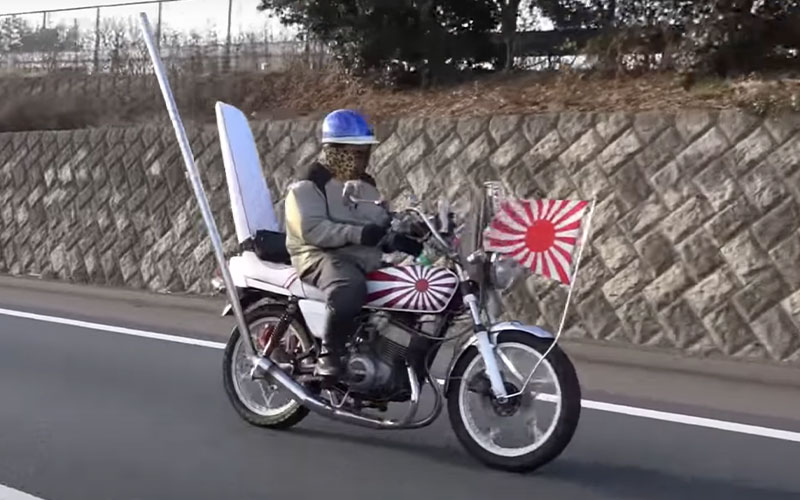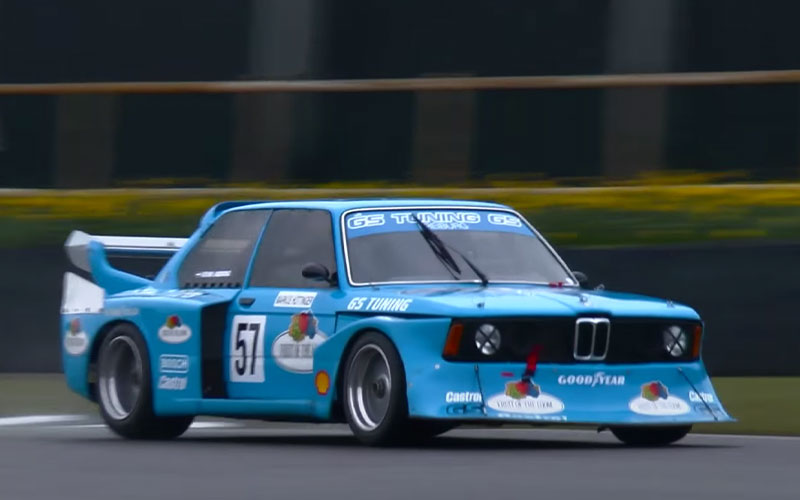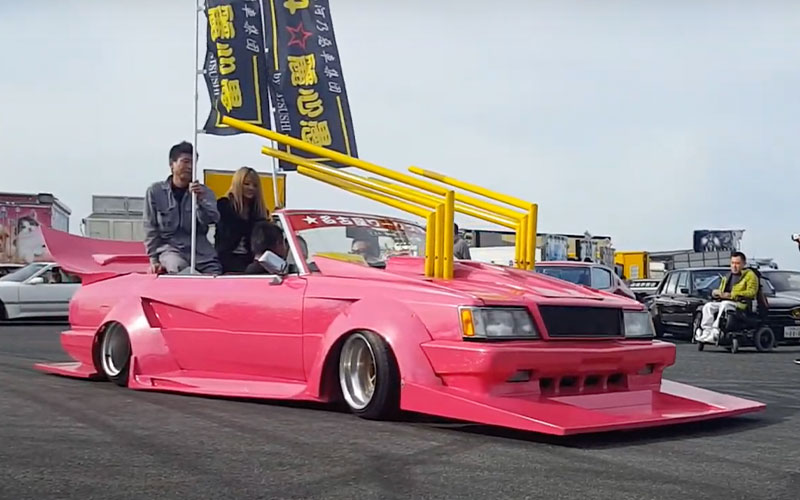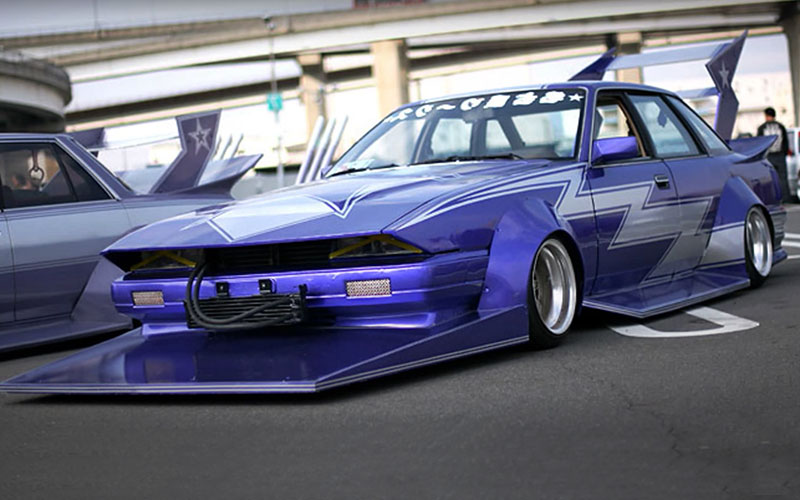What is a Bosozoku Car Style?
What is Bosozoku? While everyone likes JDM builds, there is a Japanese car culture that loves over the top customizations. Read more here.
A JDM Car Culture You’ll Love or Hate
JDM fans all love to look at a clean Nissan Silvia or Honda Civic build from overseas. They have great fitment, a polished engine bay, precise lowering, pristine wheels, and they carry engines that we in America would pay top dollar for. However, there’s a car culture over in Japan that takes every bit of customization to the extreme. Overly dramatic aero parts, bright paintjobs, long straight pipe exhausts, and super wide fenders are all found on a group of cars known as Bosozoku style.
These obnoxiously designed JDM cars are loud in every manner of the word. It’s impossible not to take notice of them on the road or even while scrolling through the internet. So, why do people do this odd customization to their cars? How did this all start? And what exactly is Bosozoku? We’ve taken a look at Japan’s car meets and read the history books, so let’s talk about Bosozoku cars.
Bosozoku Car Culture Origins

The term “Bosozoku” translates to “violent running gang”, and that’s where this car culture got its start. Following World War II, Japanese airplane pilots had a hard time accepting the return to a normal life in a normal business setting. Some hadn’t planned to return home either, which took a heavy toll on their mental health.
From there sparked early Japanese motorcycle gangs that sped around and super eccentric bikes. Tall motorcycle seat backs, large flags, bright paint jobs, and elaborate straight pipe exhausts that made your ears take notice if your eyes hadn’t already. Groups would gather and ride on these highly customized motorcycles to showcase their separation from normal society and general disregard for the law.

This aggressive design style and lifestyle gradually translated itself to car builds and the Bosozoku term we associate now. When referencing to a car as Bosozoku today, it doesn’t inherently mean that the car or its owner are a part of a gang like it had before, but rather that the design has the aggressive features attributed from the groups that started the style. Bosozoku styled cars are also influenced by the Group 5 racecars of the ‘80s. Group 5 cars like the Nissan Skyline Turbo Super Silhouette, Lancia Beta Montecarlo Turbo, BMW 320 Turbo, and Toyota Celica LB Turbo all had intricate aerodynamic designs that kept the factory hood and roofline of the cars untouched.
The features that make up a Bosozoku car are pretty apparent at first glance, but we’ll give a quick rundown of what’s been added to create one. First off, the aerodynamics of these cars are wild. Front lips that jut out 5 feet from the front of the vehicle, elongated canards that run the length of the body, long strakes popping out of the body lines, excessive vents, massive wheel fenders, and of course a rather large rear spoiler. Practicality is thrown out the window in favor of eye-catching craziness. Some of these Bosozoku cars don’t even have the room to allow the doors to open, opting instead for a Dukes of Hazzard type entrance through the window.

The wheels and suspensions of Bosozoku cars also help further the ridiculous design aesthetic. Their lowered as much as possible, sometimes are stanced, and the custom wheels are small with a low-profile tire so that they fit withing the small wheel arches of the enlarged fenders.
And then there’s the signature exhaust pipes. No catalytic converters or mufflers on these cars. Bosozoku style cars try to be as loud as possible, so they’re all straight piped. But these exhaust pipes don’t just stop at the rear bumper. Instead, Bosozoku designers integrate the overextended pipes into their design with angular turns, odd positioning, and matching paint.
The Other Types of Bosozoku Cars
Bosozoku enthusiasts tend to use older JDM cars like the Datsun 240Z, Nissan Skyline GT-R KPGC10, Honda Prelude, or Toyota Cressida. However, not all Bosozoku cars fall into the same bucket. There are some subclasses that all fall under the Bosozoku car umbrella.

Shakotan
This is essentially the Japanese lowrider, especially since Shakotan literally translates to “low car”. This class of Bosozoku cars is one of the tamest of the bunch. It has some light aero, modest fender flares, a lowered suspension, and sometimes carries a stanced wheel setup.

Yankii style
Yankii was a term for rowdy youths in the ‘80s and ‘90s, but it’s shifted to a Bosozoku style that closely resembles Shakotan. Yankii cars have the aftermarket aero, a lowered suspension, and special wheels, but this is also the level of Bosozoku styling where the fenders grow a substantial amount. Most of these cars lose the option to open the rear doors because of these large fenders. Yankii cars also typically have a more unique paint scheme than Shakotan cars.

Kyusha style
Kyusha translates to “classic Japanese car” and that’s basically what they are. Kyusha cars are older classic JDM cars that have received some slight Bosozoku modifications. They’ve got the aftermarket wheels, the low-profile tires, modest fender flares, maybe a spoiler or front lip, and are lowered with a stanced look sometimes. You may be thinking to yourself “That doesn’t sound too outlandish compared to some Bosozoku cars I’ve seen so far?” and you’re right. These things are borderline, but they still fall into the classification.

VIP style
VIP Bosozoku cars are created to look like a Yakuza boss would step out of them. They’re not as outlandish in design as the rest, but they are still show pieces. Wide body kits, clean wheels, and luxurious all around. There are no bright colors for this one, just dark polished paintjobs and shined chrome. VIP style cars are also typically some of the newest models in the Bosozoku scene and aren’t just JDM cars. They can be imported models from brands like Chevrolet or BMW too.

Grachan
Grachan stands for “Grand Championship”, as these cars are made to look just like Group 5 racers. These Bosozoku cars replicate the aerodynamics, bodywork, and paintjobs of some of their favorite racecars from the ‘80s. Some stayed true to the car that were trying to recreate, while others have taken some artistic liberties or used a different model of car underneath all those aero parts.
It’s Over the Top, But That’s Why We Love It

Are Bosozoku cars practical? No. Do they get the attention they want? Yes. Are they cool? Depends who you ask, but I think they’re pretty fun to see in person. Bosozoku is a rowdy lifestyle with a loud car and an interesting past. Some of this car culture has already made its way into the US through the way of stanced cars and JDM fans. Heck, there’s even some people cruising around California with their own Bosozoku cars (although, not very easily). So, which side are you on when it comes to Bosozoku cars? Do you love them or hate them? Let us know!










